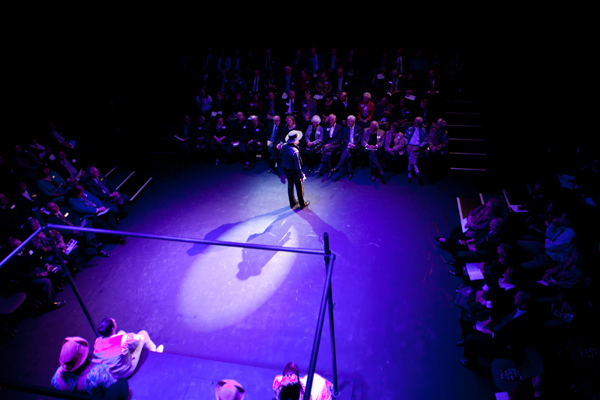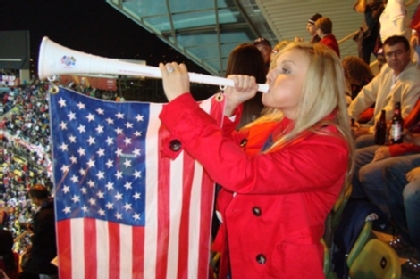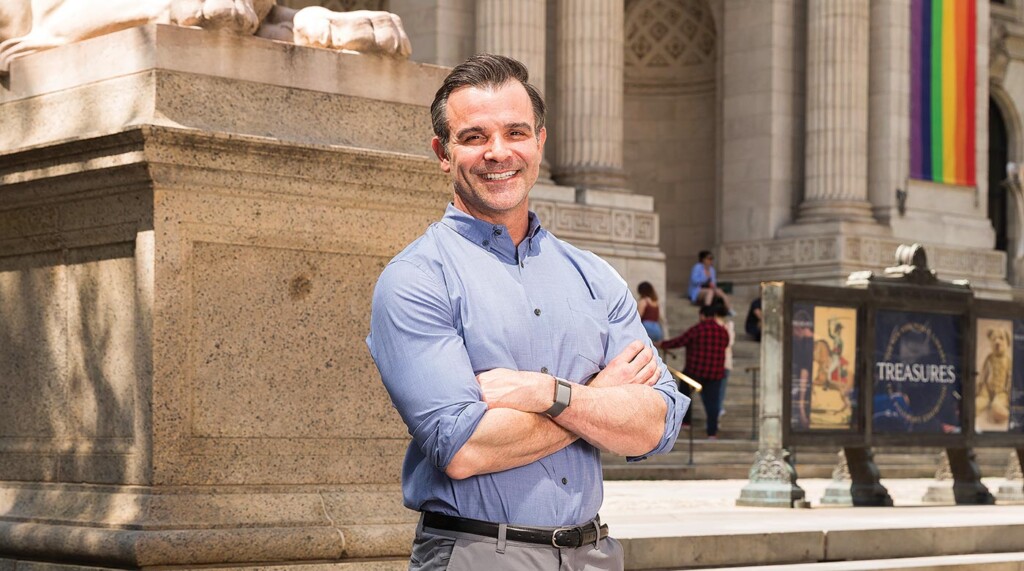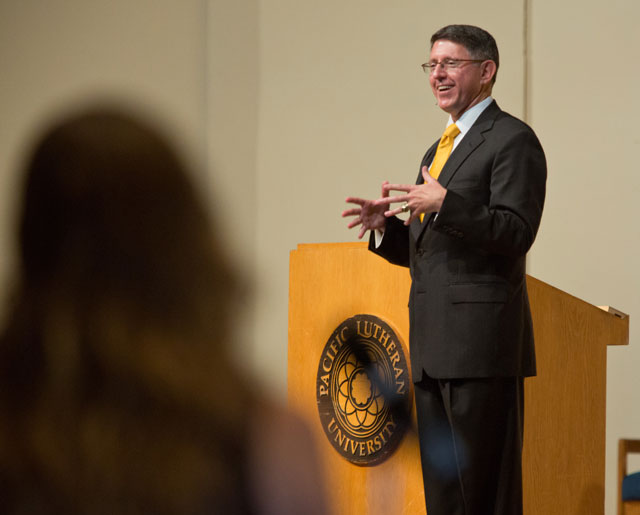Page 65 • (662 results in 0.093 seconds)
-
, the volunteers worked with the Bantu children one-on-one or in small groups. Since the Bantu were oppressed in Somalia, most of the children have had little or no education, but they did pick up some English while living in refugee camps, Greenaway explained. “We mostly help them with literacy skills, math and language,” Greenaway said. “They trick you in English. They can speak fluently, but they can’t read you ‘Harry Potter.’” When the children entered the American public school system, they
-

different from footage shot before, requiring the crew to match his hair to earlier footage using hair pieces. The crew also ran into a filming permit issue that left them scrambling to capture some of the final footage: “The last shot of the film where (Jameson’s) on his bike and looks back and smiles,” Petersen said, “we got three takes of that.” The film also received attention from industry leaders in marble production. The marbles used in the film were donated by MegaFun USA, a North American toy
-

Scholarship for the Women’s Center supports student research and programming at the center. And Lynn (Geschwind ’71) Ostenson, in memory of her late husband Richard Ostenson ’71, established an endowed scholarship for African-American students studying in the natural sciences. Endowment for Academics and Mission Gifts to the campaign led to the creation of four endowed chairs and an endowed professorship. These endowments help attract and retain top faculty, bring public recognition to the university and
-
United States and, to add complexity to an already green and overwhelmed boy, I was transitioning in the aftermath of Sept. 11. That moment effectively served as my principle moment of ¨culture shock¨ during my study away experience at PLU. London led me to Valencia, Spain, following graduation, which led me to a job with the American Red Cross and a volunteer position with the World Affairs Council of Seattle. These experiences eventually guided me to India as a consultant on corporate social
-
. Finally, my students are free. The asceticism of teaching entails respecting their freedom.While respecting the freedom of my students is prior to all else in teaching humanities, there still is much that I do to invite them into the space where the power of the humanities resides. I introduce them to the field of American religious history in the most engaging way possible, letting them see my own fascination with it. l show them issues; require them to translate material from one frame of reference
-

. State Department security marched through the streets into our seats. The typical “uniform” for any given match was a classic American get-up – jeans, tennis shoes, and the jersey of our family member. Face paint with “USA” and the number of our special player were often worn on the cheeks of mothers and (wives)WAGS, but I have to say the men of our group stayed away from anything remotely resembling makeup. As our troop of families made our way into each match, other U.S. fans would cheer us on
-

Justice at PLU teaches students to understand the social and structural context of our human experience. Our classes highlight how inequalities in American Society impact individual opportunities, such as access to housing, bail, healthcare, or legal representation. Our programs in sociology and criminal justice provide unique opportunities for independent research, faculty mentorship, and career exploration.Work with Meaning As the director of sustainability and global affairs at CEE, Schwartz runs
-

exactly excite him. Kraig, an American history scholar, explained how libraries have been on the forefront of social justice and play a key role in providing access to knowledge that belongs to everyone. Kraig shared how, especially early in U.S. history, private libraries represented wealth and power and exclusion, preventing most Americans from accessing valuable sources of knowledge and information. The innovation of public libraries, she said, was foundational to the democratization of education
-

which to work and live. I attribute much of this great spirit to our tradition and continuing commitment to the ideals of Lutheran higher education. As I like to say, Martin Luther—Professor Martin Luther—not only made Lutheran universities better, he made all universities better, even Catholic and public universities. In many ways, the superb American system of higher education—with its firm commitment to academic freedom, its rigorous questioning of all received opinions, and its belief in the
-
eradicating racism in the U.S. Armed Forces. My father had helped found the Army Community Service, which included many resources for combating racism and helping the Armed Forces become the first major American institution to desegregate.And my father, with my mother’s important help, founded the Defense Race Relations Institute to train professionals to deal with racism and bias. As a child, I remember protesters waving the Confederate flag and spitting invective at my parents and their coworkers. The
Do you have any feedback for us? If so, feel free to use our Feedback Form.


